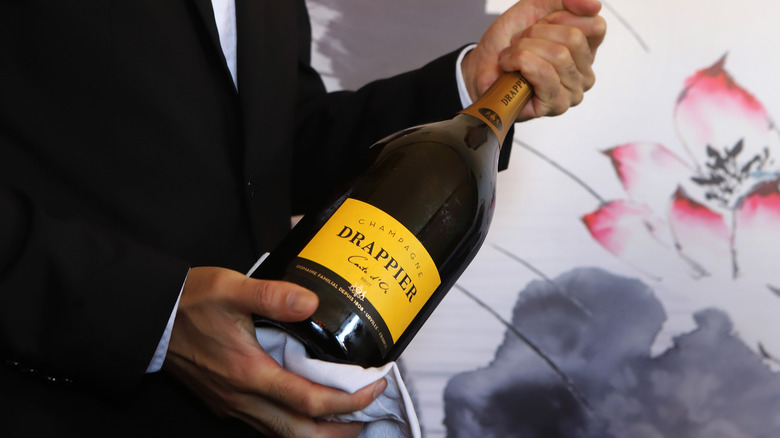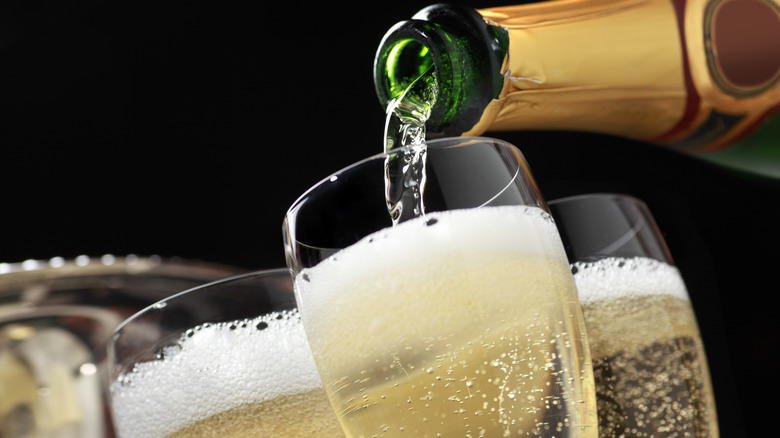Yes, Champagne Bottles Are Bigger (On The Outside)
The next time you go to pop some expensive Champagne, take a closer look at the bottle. You'll notice that Champagne bottles tend to be wider and taller than the average wine bottle, but sadly, that's not because there is more booze inside. A standard bottle of wine and Champagne both contain 750 milliliters of liquid, enough for six glasses. While a wine bottle is typically around three inches in diameter and 12 inches tall, Champagne bottles add about half an inch to both dimensions. If you tip your Champagne bottle over, you'll also notice a tiny dip or indent on the bottom, which is there to stabilize the heavy bottle. But why are Champagne bottles bigger than your standard wine bottle despite containing the same amount of liquid inside?
It has to do with the way Champagne goes from grapes to a fizzy, fermented drink. According to ex-sommelier Matthew Woodburn-Simmonds of Decoding Wine, "The glass of Champagne bottles is thicker than non-sparkling wine bottles due to the pressure inside the bottle." This added thickness offers protection against potential explosions (though it's not able to help you when opening, as the reason Champagne explodes when you pop the cork is likely related to temperature or how much it's been shaken). Woodburn-Simmonds explains the industry is "working on making the glass thinner, but stronger, as they're charged tax on exporting by weight."
It's what's inside the bottle that counts
It's not only Champagne bottles that are slightly larger; any sparkling alcoholic beverage, including sparkling wine, will be in a thicker bottle for safety, so the size of the bottle is not a good way to judge if you're drinking true Champagne. The difference between Champagne and sparkling wine is that the fizzy drink can only be called "Champagne" if it's made in the Champagne region of France. But the difference may stretch beyond its regional birthplace.
Unlike regular wine, which undergoes one fermentation, Champagne undoes a process called Méthode Champenoise, a traditional method that requires two fermentations. The first fermentation occurs when the grape juice is fermented in a barrel with the addition of sugar and yeast. The carbonation doesn't occur until the second fermentation, where the CO2 bubbles form inside the bottle.
When it comes to sparkling wines, there are no such rules about how the drink is fermented, so it's possible the carbonation was not created by fermentation. If you see a bottle of bubbly that's much cheaper than others, it's likely the carbonation was added to the bottle, similar to how soda is made.

